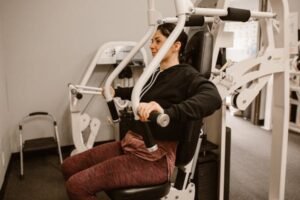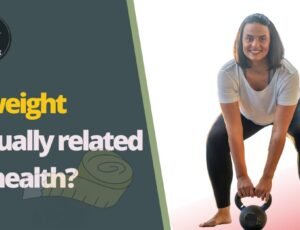
Proven Post-Pregnancy Belly Workout Tips for New Mums
Ready to get back in shape after pregnancy? Proven post-pregnancy belly workout tips can help new mums regain their strength and tone their midsection. Start with gentle exercises like pelvic tilts, bridges, and deep breathing to activate your core muscles.
Gradually incorporate more challenging workouts such as planks and leg lifts as your body heals. Remember, proper nutrition and patience are essential during this journey. Postpartum recovery varies for each mum, so listen to your body and consult your healthcare provider before starting any fitness routine.
Dive into our comprehensive guide to discover effective post-pregnancy belly workout tips and achieve a healthier, stronger you!
Table of Contents
How can one safely get stronger after childbirth?

Your body requires time and the proper type of therapy to regain strength once more after birth. This article will help mum get fit safely and successfully begin your road of recovery and fitness following birth.
Knowing Post-Pregnancy Exercise Advice

Understanding the principles of post pregnancy exercise before starting any fitness program is crucial. Your body evolved fundamentally over the last nine months. Let it cure before starting your routine. Your muscles could be weaker, especially your stomach and pelvic floor. Sometimes the disorder known as diastasis recti results in stomach muscle separation. You can avoid injury by starting your postpartum fitness adventure correctly and steadily increasing strength.
At first, easy workouts comprising walks and deep breathing activities softly targeting your core muscles include. After you’ve finished these exercises, your body will be prepared for more demanding postnatal workout routines. Their help with oedema reduction, blood circulation restoration, and mood enhancement sets the foundation for new mum fitness.
See Your Doctor

Consult your doctor before starting any post pregnancy exercise routine. Whether your birth was a C-section or a natural will define your recovery period. Should a woman have a vaginal birth, she can start a modest six-week exercise program. Few women who had a C-section may have to wait longer. Once your doctor has verified your healing and given the all-clear, beginning a postnatal workout program poses no risk.
You will recuperate differently than other mothers; steer clear of trying to measure yourself against them. If you listen to your body and take your doctor’s instructions, you can engage in safe postpartum workouts.
Combine resilience postpartum

All know that one of the most important aspects of postpartum fitness is developing your core strength. You must steadily raise the strength of your stomach muscles if you want them to remain powerful following delivery. The critical muscle in your belly you should target is the transverse abdominis. This muscle keeps organs and your spine aligned like a belt would.
Core strengthening after birth begins with basic motions such as pelvic tilts, leg slides, and bridges. If you have diastasis recti, this is crucial since these exercises strengthen your abs without taxing them too much. Regular crunches or sit-ups could irritate the split, so avoid doing them. As your core gets stronger, post-pregnancy abdominal exercises can progress to become more complex.
Start with pelvic exercises

Many people overlook that postpartum training also addresses the pelvic floor. These muscles are under significant tension during pregnancy and birth, which could cause leaking. Strengthening your pelvic floor guarantees general postpartum fitness and helps you avoid long-term problems.
Most people get their pelvic floor strength via kegel exercises. Squeeze the muscles to retain your urine for a few seconds, then release. Try practicing multiple Kegels every day as part of your new mum fitness routine. Your pelvic floor muscle strength will decide whether or not you can properly control your bladder. If your abdominal muscles are strong, your postnatal workouts will be more successful.
Note: There might be affiliate links mentioned here. We may receive a commission if you purchase a product through an affiliate link. There is no additional charge for you. Please do your own research before making any online purchases.
Give safe postpartum exercise

Safety comes first in the first postpartum training session. Your body is still healing; hence, you should concentrate on less demanding activities. Walking helps one start to form much more effectively. It exercises multiple muscle groups without straying too far from your tummy. Easy movements that boost blood flow will help you to become more flexible.
After delivery, you should engage in safe activities such as swimming, Pilates, or yoga when ready to increase your effort. As we know these exercises will build your core without harm, increase your flexibility and strengthen you. Don’t hurry and avoid motions that might tax your body.
Begin slow postpartum abdominal exercises

Once you have more self-confidence and are stronger, it is fine to include particular post pregnancy abdominal exercises in your routine. As you move through these poses, really focus on yourself. They have to tone your tummy and help your growing solidity. Start with simple moves including bird-dog stances, toe taps, and heel slides. These will tax your central muscles.
First, avoid squats and crunches—especially if you already have diastasis recti.
These movements risk straining your muscles and overly stressing your stomach. Before attempting more challenging exercises for core strengthening after birth, such as modified planks and standing core exercises, focus on strengthening the transverse abdominis.
Exercise Requirements for Consistency of New Mothers

All known consistency is essential in the realm of new mum fitness. Having a baby could make you time-starved for physical activity. Still, it’s better to conduct quick sessions more often than once-weekly long ones. Postnatal workouts should last 15–20 minutes daily. Whether you focus on your core, perform pelvic floor exercises, or go for a quick walk—active will help you see changes faster.
Including exercise in your routine will also boost your attitude, assist you to feel like yourself once more after birth, and raise your vitality. Furthermore, remember that little actions over time have a tremendous cumulative effect.
Conclusion
You must be patient, wait, and exert effort towards postpartum healing. You may get back in shape and feel good about your body by following these tried-and-true, safe postpartum workouts, concentrating on core strengthening after birth and keeping consistency. Safety is always first. Analyse your body and value every stride. Weightlosstechers offers individualised, safe postpartum workouts designed to help women get healthy and regain core strength; this is a great place to start your postpartum exercise journey. Join our program immediately to rebuild your confidence and follow professional advice towards your exercise objectives. It could be fulfilling and inspiring to tackle your new mum’s fitness path with the correct mindset.
Disclaimer: The information provided in this article is for educational purposes only and should not be considered as a substitute for medical advice. Consult a healthcare professional before implementing any home remedies or making significant changes to your lifestyle.
FAQs
When can I start post-pregnancy belly workouts?
Consult your healthcare provider, but generally, you can start gentle exercises 6-8 weeks postpartum, depending on your recovery.
What are some safe exercises to begin with?
Start with gentle core exercises like pelvic tilts, bridges, and deep breathing to activate your core muscles.
How can I gradually increase the intensity of my workouts?
As your body heals, incorporate more challenging exercises like planks and leg lifts, ensuring proper form and gradual progression.
Why is proper nutrition important post-pregnancy?
Proper nutrition supports your body’s recovery, provides energy for workouts, and helps in maintaining a healthy weight.
How can I stay motivated during my postpartum fitness journey?
Set realistic goals, track your progress, join a support group, and celebrate small achievements to stay motivated and committed.






